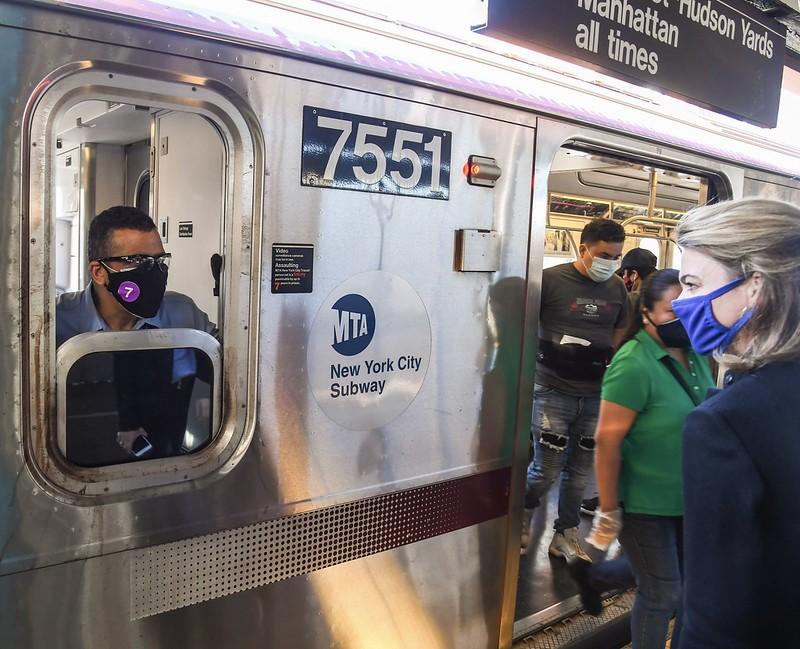A pair of new studies describe how two US jurisdictions quickly mobilized teams of contact tracers to identify and isolate people exposed to SARS-CoV-2, with a massive New York City effort finding 1.4 contacts per case and a college student-led Central Pennsylvania initiative that may have led to fewer symptomatic household infections.
Tracking, interviewing, quarantining
In the first study, a team led by researchers from the New York City Department of Health and Mental Hygiene (DOHMH) detailed how a workforce of 4,147 mostly remote (87%) workers attempted to investigate 941,035 COVID-19 cases and conduct interviews of 1,218,650 contacts from Jun 1, 2020, to Oct 31, 2021. The findings were published yesterday in JAMA Network Open.
All staff were trained—again, mostly remotely—on privacy and confidentiality, health equity, trauma-informed care, and implicit bias, and those who worked in the community were educated about safety and the use of personal protective equipment. Together, the contact tracers spoke more than 40 different languages.
Each day, the DOHMH sent records of probable or confirmed COVID-19 cases to the NYC Health + Hospitals' Trace program, where they were uploaded into a database-phone system and assigned to case investigators (937 at peak).
Case investigators provided education, evaluated symptoms, identified close contacts (ie, those within 6 feet of the potentially infected person for at least 10 minutes), pinpointed locations the person visited while infectious, assessed the need for support services, and advised them to isolate for the recommended period.
Each contact was assigned to a monitor (2,670 at peak), who conducted intake interviews, performed daily case and contact monitoring, and advised on the appropriate length of quarantine. Infected people and contacts were monitored via phone or text during the period of infectiousness.
Infected patients or contacts who could not be reached because of insufficient contact information or nonresponse to three or more outreach attempts were assigned to an information gatherer (74 at peak). This team used Regional Health Information Organizations databases, the commercial application CLEAR, and clinician contacts to find more information.
Contacts were offered a hotel stay, food and medication delivery, information about state sick leave policies, test or sample-collection kits, and care packages (ie, masks, hand sanitizer, and thermometer), and those diagnosed as having COVID-19 received a pulse oximeter for oxygen monitoring. If no contact information could be located, community engagement specialists (540 at peak) performed home visits or closed the cases.
Almost 90% of contacts reached
The Trace team attempted to reach 881,080 (93.6%) of infected New Yorkers and 1,143,389 contacts (93.8%) within 24 hours of referral. Their efforts resulted in the contacting of 840,922 of 941,035 New Yorkers (89.4%) who had confirmed COVID-19 infections, 711,353 (75.6%) of whom completed an intake interview. Of those interviewed, 50.4% were women, 28.3% were Hispanic, 22.1% were White, 15.6% were Black, and 8.5% were Asian.
Workers attempted to interview 1,218,650 contacts, reaching 74.3% and completing intake interviews with 48.4%. Less than half (37.2%) of the contacts interviewed were women, 30.1% were Hispanic, 19.7% were White, 16.8% were Black, and 8.0% were Asian.
Interview completion rates remained stable over time, regardless of changing COVID-19 vaccine availability and quarantine guidance. A median of 1.4 contacts per case were identified, and median time from symptom onset to interview completion was 4.7 days.
The median interval from the contacts' last date of exposure to intake completion was 2.3 days. A total of 30.1% of contacts were tested for COVID-19 within 14 days of notification. Of all cases, 27.8% were contacts.
A total of 9.5% of COVID-19 patients and 5.4% of contacts used at least one support service, the most common of which was food delivery (32.7% of patients and 33.2% of contacts). The program cost about $600 million.
"Despite the complexity of developing a contact tracing program in a diverse city with a population of over 8 million people, in this case study we were able to identify 1.4 contacts per case and offer resources to safely isolate and quarantine to over 1 million cases and contacts in this study period," the study authors wrote.
"Keeping up with the massive volume of new cases and contacts was made possible by maintaining a large workforce that exceeded national recommendations of 30 contact tracers per 100,000 population as well as utilizing an integrated database-telephone system," they added.
Early action may have reduced spread
Yesterday in the Annals of Epidemiology, a team led by Brown University and Penn State researchers published a study on a Penn State student-led contact-tracing program in Central Pennsylvania. The study spanned Mar 24 to May 26, 2020.
The contact tracers, who were health professional students, helped health system leadership and faculty design the program. They advised and monitored close contacts of 346 confirmed and 157 suspected COVID-19 cases, 58% of whom were female; median age was 40 and 33 years among those with confirmed or probable infections. There was a significant difference in the proportion of symptomatic household contacts of confirmed versus probable cases (22% vs 3%).
Those with probable infections had significantly fewer non-household contacts than those with confirmed cases (0.87 vs 0.55). Among COVID-19 patients who reported household contacts, a higher proportion of their non-household contacts reported symptoms (17%) than those with probable infections (10%).
"The number of symptomatic household contacts differed significantly between confirmed and presumptive cases," the authors wrote. "We believe this reflects that early action on presumptive cases reduced transmission to household members. However, it is possible that this finding reflects that presumptive cases were not infected with COVID-19 and, thus, were at no risk for transmitting to others."


















